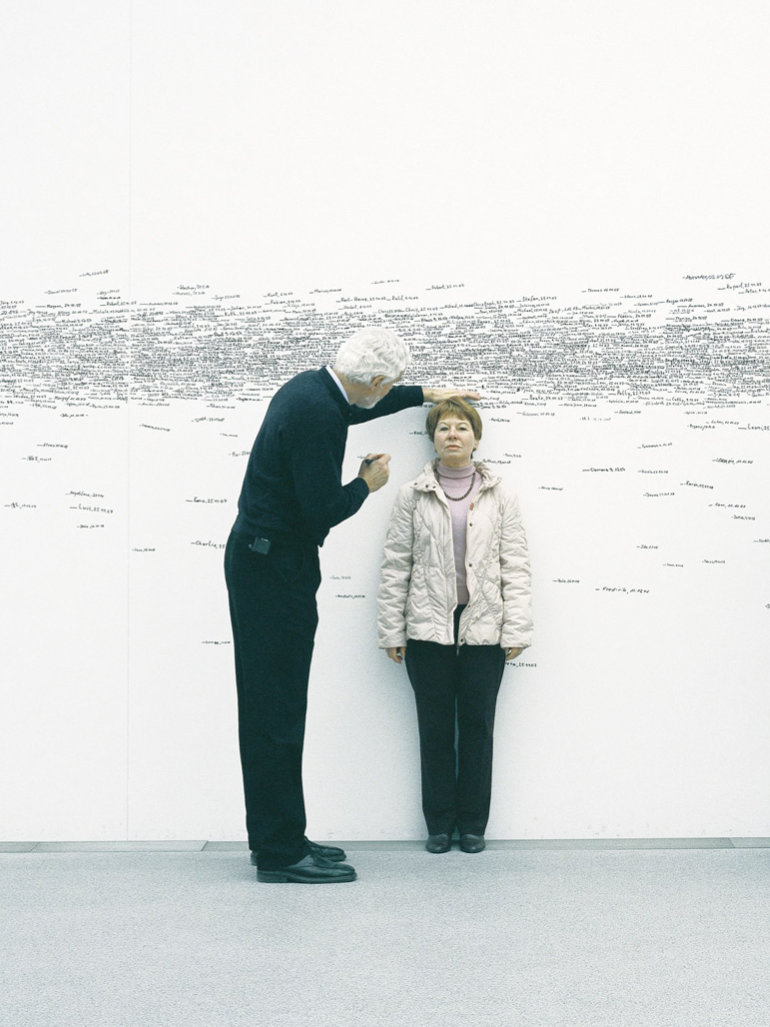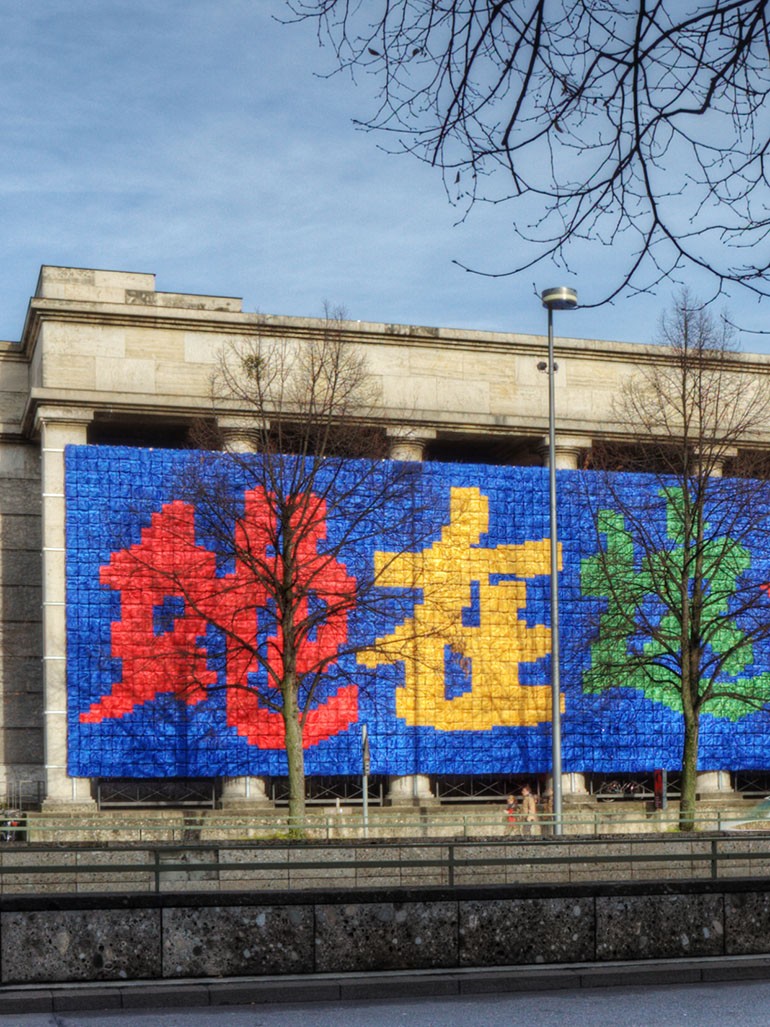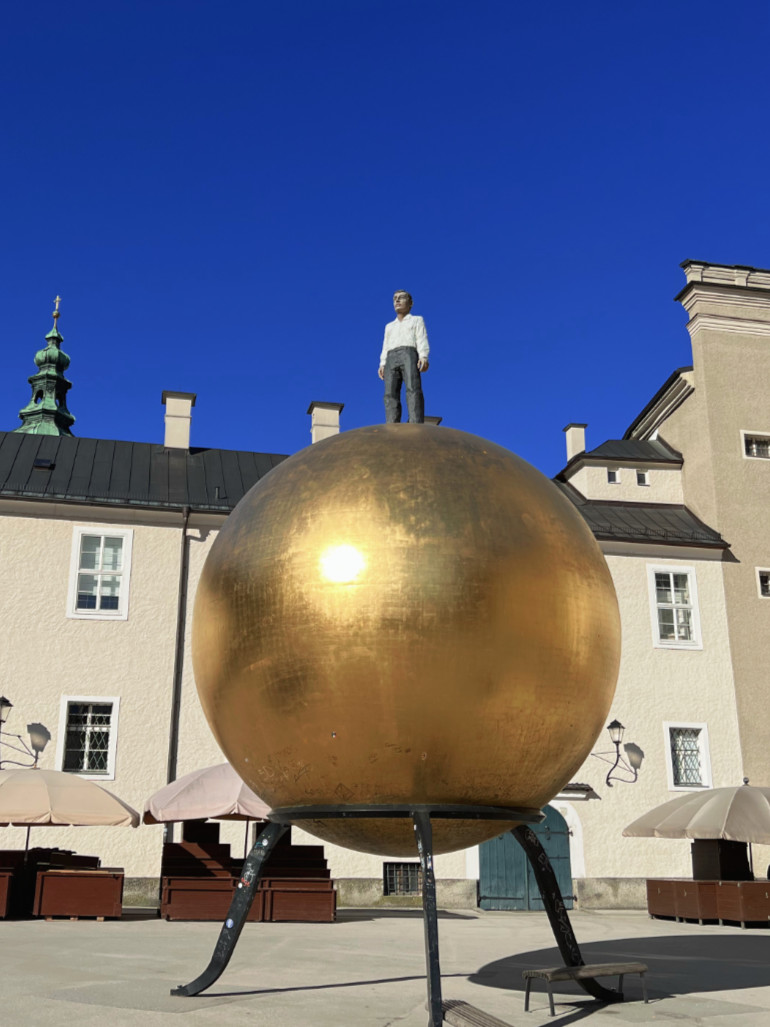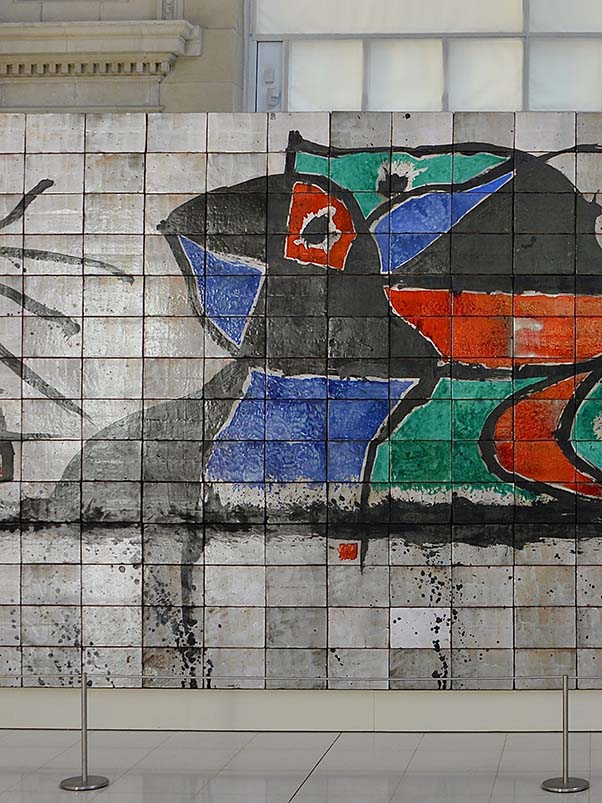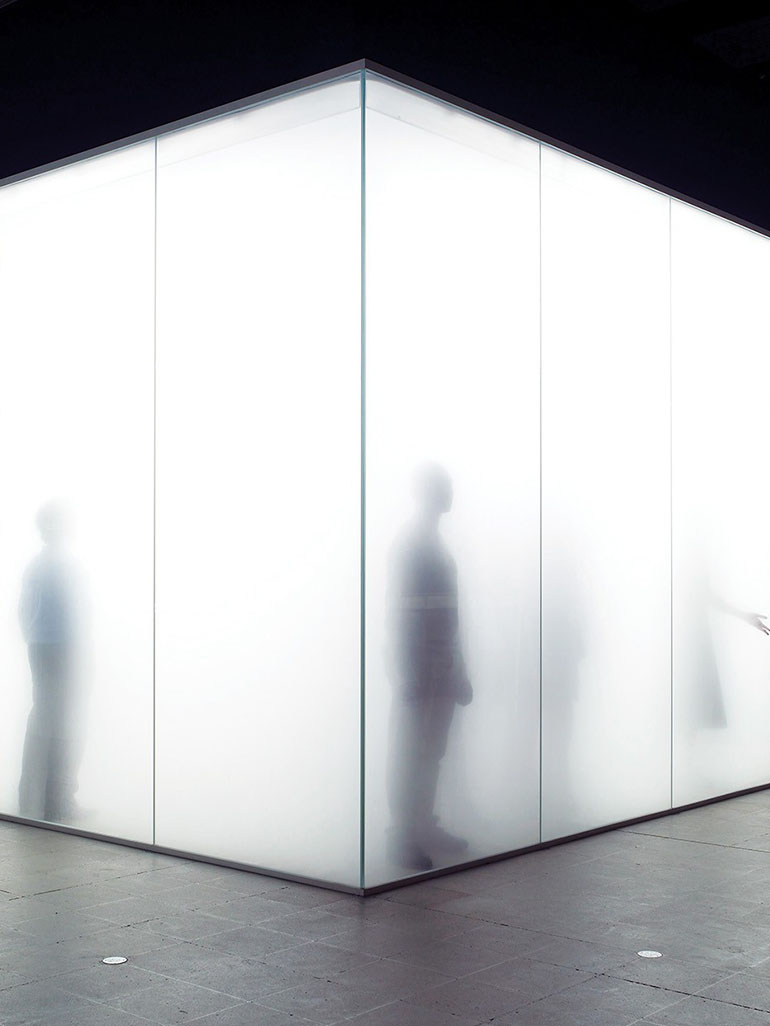
80992 Munich, Germany Copy to clipboard
48.169704, 11.528555 Copy to clipboard
Before you go
Photography: Bring a camera with good low-light performance to capture the vibrant lighting effectively. Tripods may be useful for stability during night photography.
Best visit time
The optimal time to visit this subway station is during the evening hours, when the colorful lighting creates a stunning visual effect.
Weekdays tend to be less crowded than weekends, making for a more tranquil experience.
Early mornings may also offer unique lighting conditions and fewer visitors.
Directions
Public transport
Subway: The station is served by lines U1 and U7.
Tram: Trams stop directly at the entrance to the station, providing seamless access.
Car
There is a parking lot available in the immediate vicinity for commuters.
Bicycle
Bicycle racks are located close to the station for easy access.
Westfriedhof Station
Think of a subway station and what comes to mind is a dark and busy place, likely dirty and filled with old metal and concrete. Fortunately, there are exceptions to this. One of them is the colorful 1 and bright Westfriedhof Subway station in Munich, Germany, that departs from the common conception of subway stations 2 and instead bathes the visitor with colorful beauty.
What sets Westfriedhof apart is its lighting concept, developed by renowned designer Ingo Maurer 3. Red, blue and yellow lights shine brightly from the station’s oversized lamps. Each of the 11 domes, measuring an impressive 12 feet in diameter, casts a vibrant glow that transforms what would otherwise be an average metro station.
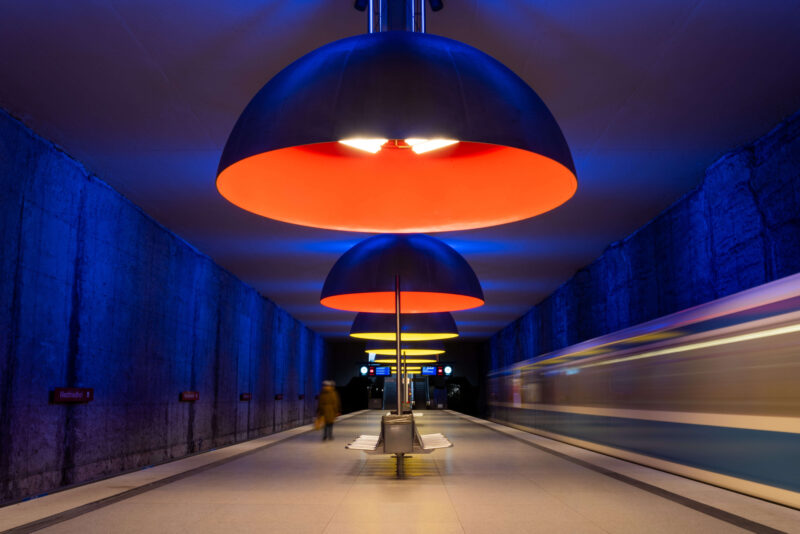
A brief history
The station was opened in 1998 and had its impressive lamps, 11 in total with red, yellow and blue lights, installed in 2001. It is located on the border of the Neuhausen-Nymphenburg and Moosach districts and for four years since it was opened, it was the northern terminus of the U1 line.
The metro station was planned by the architecture studio Auer and Weber, in collaboration with the city’s urban subway department.
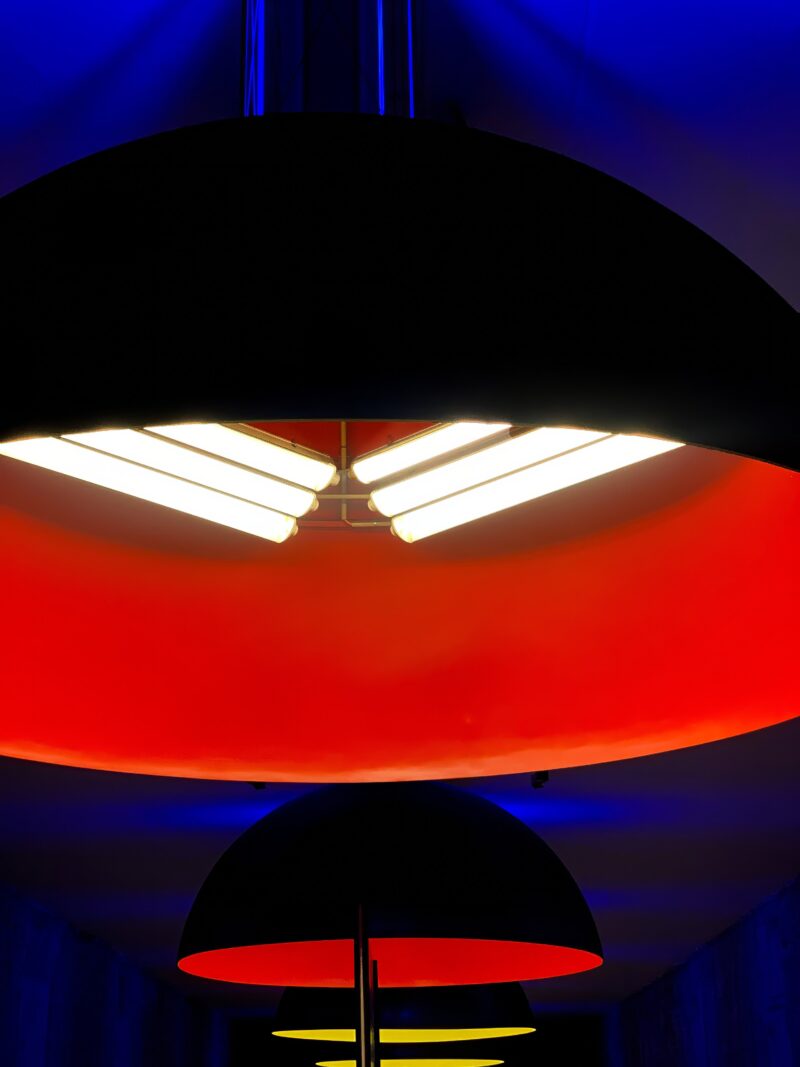
As Maurer later reflected 45, At the beginning of my career, I focused a lot on the shape of lamps. Later I realized that the light itself is much more important than the form. This evolution in thinking is evident in the way Westfriedhof relies on color and light to define the space, rather than decorative elements or elaborate fixtures.
Thus, due to its radiant lighting that illuminates up the entire platform area without leaving any dark corners, the metro station looks like a bright cave. The enormous domed lamps emit a warm neon glow of red, blue or yellow light across the platform and the tracks, making passengers’ wait more pleasant.
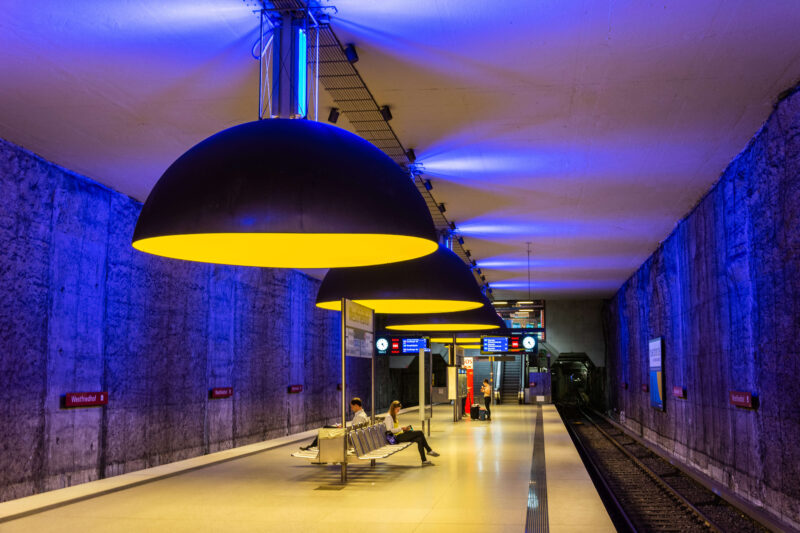
The lighting
The raw concrete, in combination with the huge aluminum lampshades, makes it seem like a factory hall converted into an art center, making the transport hub appear more lively. To reflect the aluminum lampshade, 12 fluorescent tubes are set back far into each dome.
I wanted people to feel comfortable in an underground space, as if they were living in a room and not in a train station.— Ingo Maurer on U-Bahnhof Westfriedhof (2010, Stylepark 67)
Meanwhile, the domes are suspended from the ceiling using silver-lacquered steel frames. With each lampshade fitted with a colorful fluorescent tube, the raw concrete walls and ceiling surfaces are bathed in blue light, with varying tones and intensity depending on the positioning and reflection, creating a vivid yet calming atmosphere.
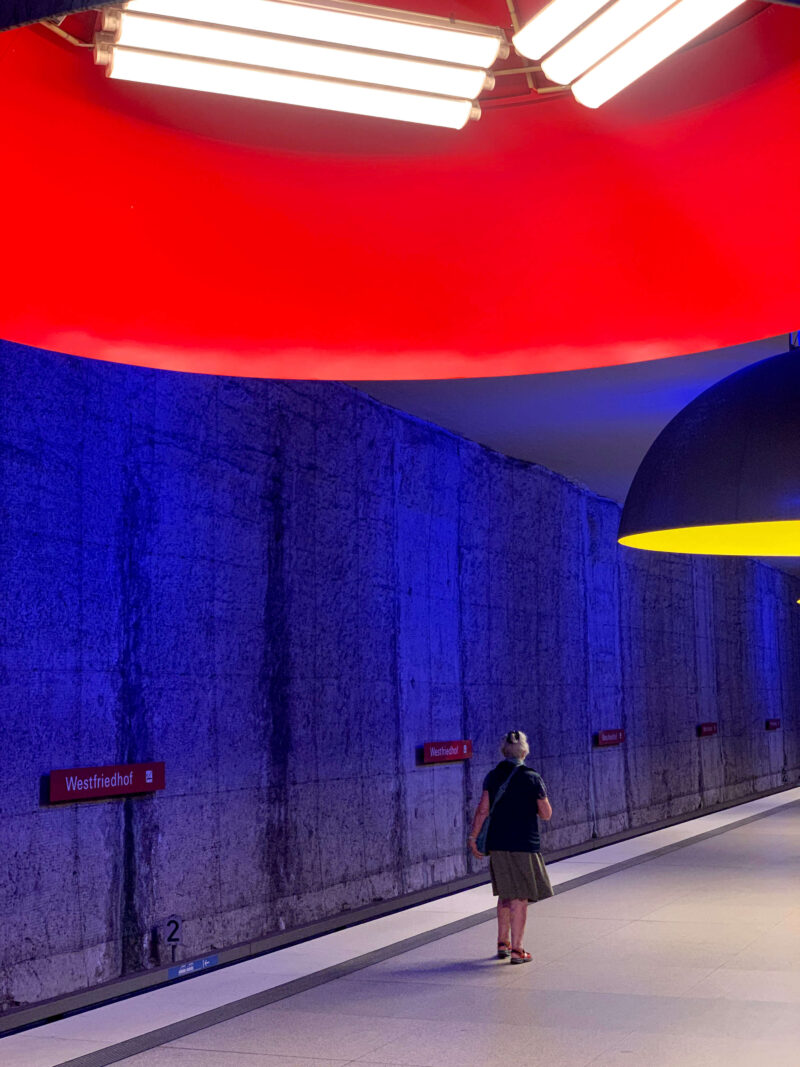
Other architectural features
Aside from the lamps, the station is devoid of tacky and superfluous decor and the station consists of bare shaft walls, stainless steel furniture and ceilings and walls of exposed concrete.
The cave-like surfaces are reinforced by the rough wall surfaces that come from the little treated milled diaphragm walls that lie between and where the station was excavated. The rock-like structures were left uncovered as a design feature because the architects liked that look better than using glass as they initially intended to add to the semi-natural feel of the station.
I want people to simply experience my objects and not analyze them in any particular way, said Maurer in 2019 89, underscoring his desire for emotional impact over intellectual interpretation.
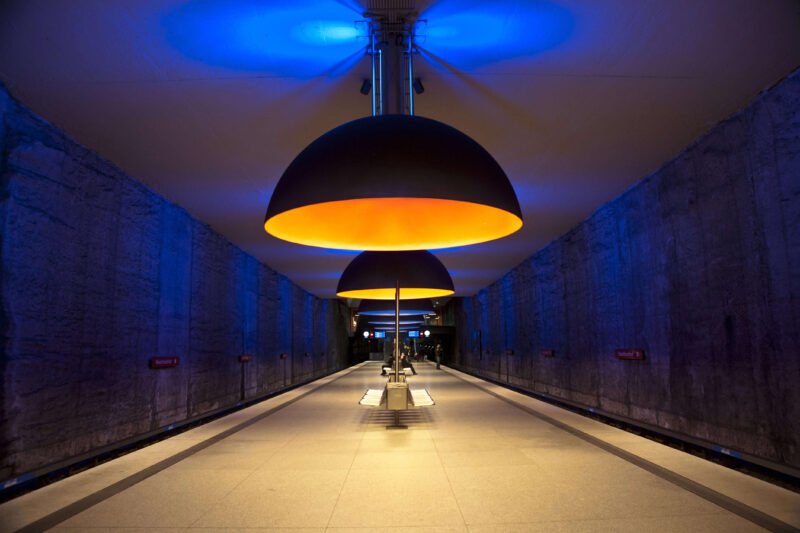
The careful coloring and lighting intensity and placement are what make the entire place look warm enough, even with the contrast of the exposed concrete, that can remind one that the station’s name refers to ‘cemetery’.
Meanwhile, the ceiling has airy openings through the stairwell of the station that allow daylight to penetrate through. With this environment, lighting and visually interesting features, it has become a popular photo-taking destination for many advertising agencies.
My perception of light is so strong and distinctive, almost an obsession. This forces me to continuously play and experiment with the reflection and the art of light.— Ingo Maurer on his approach to design (2007, Interview 1011)
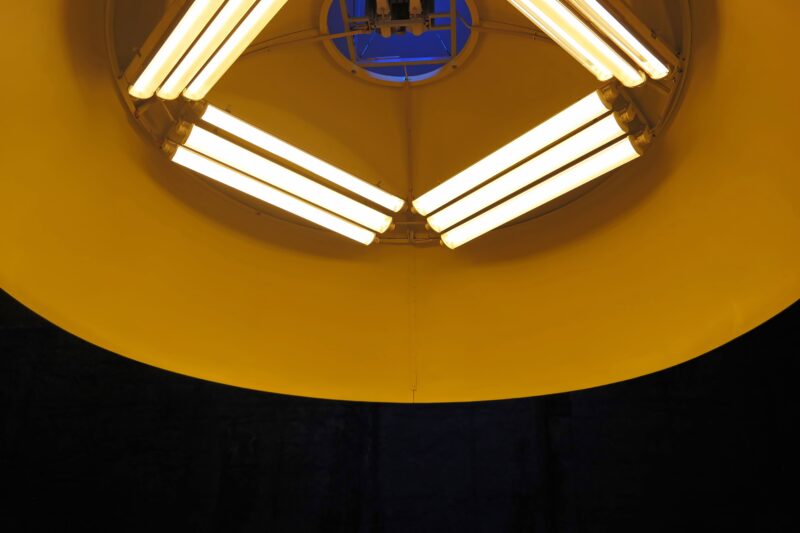
Final words
With its bold lighting concept, raw materials, and minimalistic design, Westfriedhof Station transforms a functional space into something atmospheric and memorable. Ingo Maurer’s visionm driven by emotion rather than analysis, turns this underground stop into an immersive 12 experience that continues to surprise and inspire visitors decades after its creation.
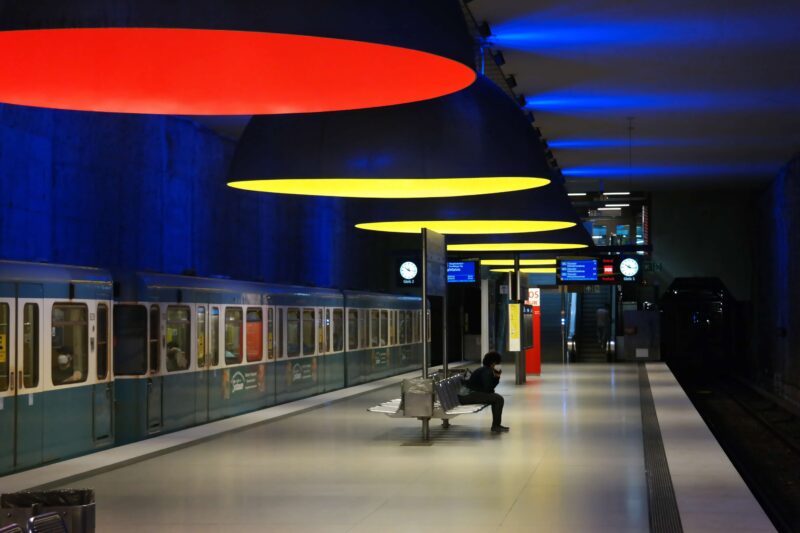
Explore nearby
 Roman Ondák's Measuring the UniverseExhibition ended (dismantled in 2022)4 km away
Roman Ondák's Measuring the UniverseExhibition ended (dismantled in 2022)4 km away Ai Weiwei's 9000 children's backpacksInstallation ended (dismantled in 2009)5 km away
Ai Weiwei's 9000 children's backpacksInstallation ended (dismantled in 2009)5 km away Stephan Balkenhol’s Sphaera sculpture120 km away
Stephan Balkenhol’s Sphaera sculpture120 km away Olafur Eliasson's Meditated MotionExhibition ended (dismantled in 2001)152 km away
Olafur Eliasson's Meditated MotionExhibition ended (dismantled in 2001)152 km away Joan Miró's largest artworks180 km away
Joan Miró's largest artworks180 km away
